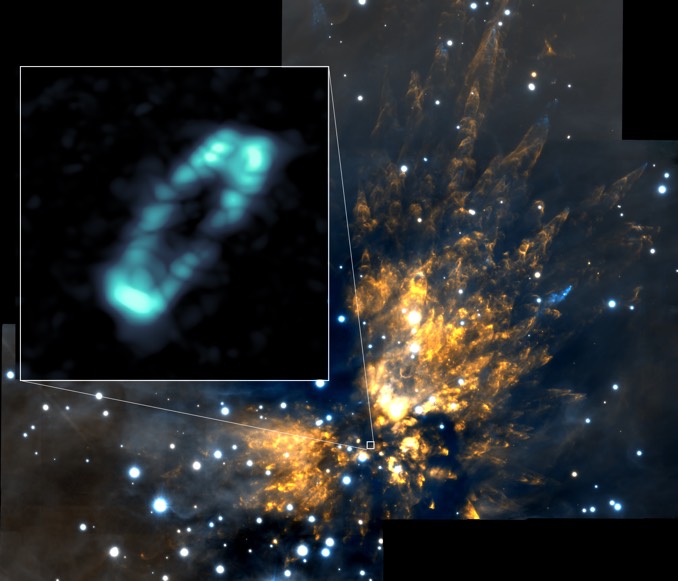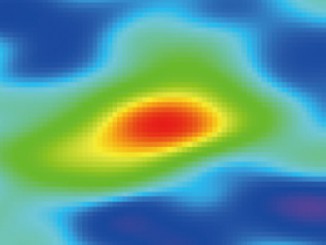
Astronomers using the Atacama Large Millimeter/submillimeter Array, or ALMA, have found the spectroscopic fingerprints of sodium chloride – table salt – in a ring of dusty debris around a massive young star 1,500 light years away that formed in the Orion Molecular Cloud Complex.
“It’s amazing we’re seeing these molecules at all,” said Adam Ginsburg, a Jansky Fellow of the National Radio Astronomy Observatory (NRAO) in Socorro, New Mexico, and lead author of a paper accepted for publication in the Astrophysical Journal.
“Since we’ve only ever seen these compounds in the sloughed-off outer layers of dying stars, we don’t fully know what our new discovery means. The nature of the detection, however, shows that the environment around this star is very unusual.”
The ALMA observations include about 60 spectral signatures, or transitions, of salt compounds, signals caused by temperatures in the disc ranging from 100 kelvin to 4,000 kelvin. Such spectral “spikes” may provide new clues about how young stars heat up protoplanetary discs and serve as a measure of its luminosity.

“When we look at the information ALMA has provided, we see about 60 different transitions, or unique fingerprints, of molecules like sodium chloride and potassium chloride coming from the dis,” said co-author Brett McGuire, an NRAO researcher in Charlottesville, Virginia. “That is both shocking and exciting,”
The star in question, known as Open Source 1, formed in a region of explosive starbirth known as the Orion Molecular Cloud Complex. The young star apparently was ejected from one of the two huge clouds making up the complex some 550 years ago. The ALMA observations suggest the amount of salt in the disc is roughly equivalent to the combined mass of Earth’s oceans.
“It is possible that solid grains of salt were vaporised by shock waves as the star and its disk were abruptly accelerated by a close encounter or collision with another star,” said co-author John Bally of the University of Colorado. “It remains to be seen if salt vapour is present in all disks surrounding massive protostars, or if such vapour traces violent events like the one we observed with ALMA.”



